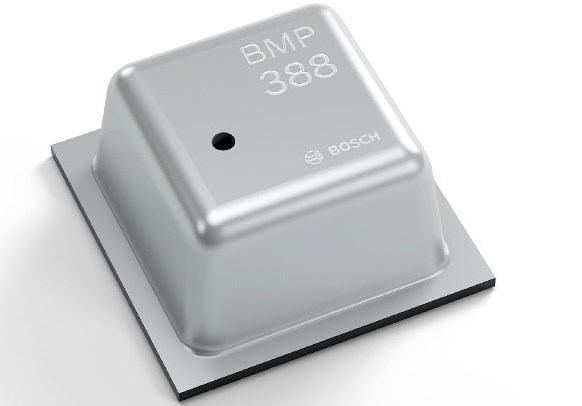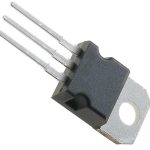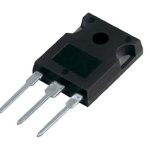BMP388, this cutting-edge sensor, building upon its predecessor BMP380, offers a whole new level of precision and accuracy in measuring altitude and atmospheric pressure. Join us as we unravel the datasheet, pinout, wiring, price, of Bosch Sensortec’s BMP388 and its comparion with BMP280, BMP380, BMP390.
BMP388’s significance in pressure sensing technology
As a high-accuracy digital barometric pressure and temperature sensor, it offers advanced capabilities that enable precise measurements in various applications. With its exceptional performance and robustness, the BMP388 has emerged as a reliable solution for industries such as automotive, consumer electronics, and environmental monitoring.
The sensor’s ability to provide accurate pressure and temperature data in real-time contributes to improved weather forecasting, altitude tracking, and air quality analysis. The BMP388’s significance lies in its ability to enhance the accuracy and reliability of pressure sensing, thus enabling more sophisticated and data-driven applications.
Introduction to Bosch Sensortec as the manufacturer

Bosch Sensortec, renowned for its innovations in sensor technology, is the manufacturer behind the BMP388. As a subsidiary of the Bosch Group, Bosch Sensortec is a leading supplier of microelectromechanical systems (MEMS) sensors. With a strong commitment to quality and performance, Bosch Sensortec has established itself as a trusted provider of sensors for various industries.
BMP388 Datasheet Analysis
The datasheet for the BMP388 sensor provides a comprehensive overview of its features, specifications, and operating characteristics. The datasheet typically includes detailed information about the sensor’s electrical and mechanical characteristics, such as supply voltage range, communication protocols, and pin definitions. Additionally, it offers insights into the sensor’s performance parameters, including pressure and temperature measurement ranges, accuracy, resolution, and response time.
The datasheet also delves into the technical specifications of the BMP388. It outlines the operational temperature range and specifies any calibration requirements or compensation techniques that may be necessary for accurate readings. Moreover, the datasheet typically highlights the sensor’s power consumption characteristics, allowing designers to optimize their systems for energy efficiency.
Other technical details covered may include the sensor’s response time, sampling rate, and digital interface compatibility. Through a thorough examination of the technical specifications, users can evaluate the BMP388’s suitability for their intended application and make informed design decisions.
BMP388 Pinout and Wiring Guide
To effectively utilize the BMP388 sensor, understanding its pinout configuration and proper wiring is essential. The BMP388 comes in a compact package with a specific pin arrangement that facilitates easy integration into circuit designs. The pinout typically consists of power supply pins (VDD and GND), communication pins (SDI and SDO), and the chip select pin (CS). It is crucial to refer to the datasheet or manufacturer documentation for the exact pinout details, as they may vary depending on the specific package and module.
Guidance on how to correctly wire the sensor
- The power supply pins (VDD and GND) should be connected to a stable power source within the recommended voltage range.
- The communication pins (SDI and SDO) are used for interfacing with microcontrollers or other devices. They should be connected to the corresponding data lines of the host system, following the specified communication protocol, such as I2C or SPI.
- Additionally, the chip select pin (CS) is used in SPI mode to select the BMP388 sensor, specifically when multiple devices are connected on the same bus.
Tips for ensuring proper connectivity and optimal performance
- To maximize performance, it is advisable to keep the wiring as short as possible, minimizing any potential signal losses due to long interconnects.
- Proper grounding techniques, such as connecting GND pins to a common ground plane, can help reduce noise interference and ensure accurate readings.
- Furthermore, using appropriate decoupling capacitors near the power supply pins can enhance stability and prevent voltage fluctuations.
It is essential to carefully follow the recommended guidelines provided in the datasheet and application notes to achieve reliable and optimal performance from the BMP388 sensor.
BMP388 Price and Availability

The cost of the BMP388 may vary depending on factors such as package type, quantity ordered, and supplier. Generally, the BMP388 falls within a competitive price range compared to similar sensors in the market. Its cost is often justified by its high accuracy, advanced features, and robust performance.
Information on sourcing options
In terms of availability, the BMP388 can typically be sourced from various reputable distributors, both online and offline. Bosch Sensortec, as the manufacturer, regularly partners with authorized distributors to ensure the availability of their products. Additionally, there may be options to directly purchase the sensor from the manufacturer’s official channels. It is advisable to check the availability with multiple suppliers to ensure timely delivery and reliable sourcing.
The cost-effectiveness of BMP388
When evaluating the cost-effectiveness of the BMP388, it is essential to consider the sensor’s features and performance in relation to its market value. The BMP388 offers significant advantages in terms of accuracy, stability, and low power consumption compared to many other pressure sensors available. Its high resolution, wide measurement range, and fast response time make it suitable for a wide range of applications.
BMP388 vs. BMP280
The BMP280 is a predecessor of the BMP388 and a popular sensor in its own right.
It is also a digital barometric pressure and temperature sensor, but with lower accuracy and fewer features than the BMP388. The BMP280 has a pressure measurement range of up to 1100hPa, while the BMP388 extends up to 1250hPa. Additionally, the BMP280 has a lower temperature measurement range, and its accuracy is not as high as that of the BMP388.
With its improved accuracy, wider measurement range, and advanced features like altitude tracking, the BMP388 offers significant upgrades over the BMP280.
BMP388 vs. BMP380
The BMP380 is another sensor that shares some similarities with the BMP388. Both sensors are from the same manufacturer and offer similar measurement ranges, communication protocols, and interfaces. However, the BMP388 has several enhancements over the BMP380 that make it a superior choice.
The BMP388 has a higher accuracy level, lower power consumption, and faster response time than the BMP380. The BMP388’s temperature measurement range is also wider, and it provides additional features like altitude tracking and air quality analysis. These improvements make the BMP388 a more versatile and flexible sensor for various applications.
BMP388 vs. BMP390
The BMP390 is a relative newcomer in the BMP series of sensors and has many similarities to the BMP388. However, the BMP388 again comes out on top with some notable benefits and advantages.
- The BMP388 has a higher accuracy level, lower power consumption, and faster response time compared to the BMP390.
- The BMP388’s pressure measurement range also extends up to 1250hPa, which is greater than the BMP390’s 1200hPa range.
- Additionally, the BMP388 provides advanced features like altitude tracking and air quality analysis that are not available in the BMP390.
- In terms of cost-effectiveness and overall performance, the BMP388 remains a top choice among developers and engineers.
Conclusion
Bosch Sensortec’s BMP388 is a groundbreaking sensor that sets new standards in altitude and atmospheric pressure measurement. By incorporating highly advanced algorithms, it provides unrivaled accuracy and precision, making it an invaluable tool across a wide range of industries. From enhancing safety in aviation and improving weather prediction models to optimizing outdoor activities and powering the Internet of Things, the BMP388 is at the forefront of innovation.



